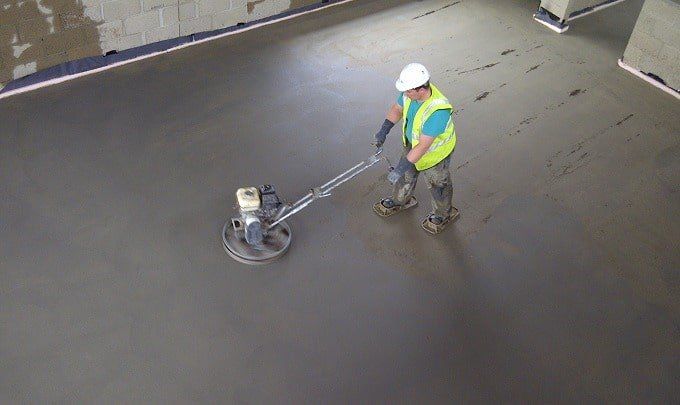(Featured photo courtesy of The Constructor)
Screed can be considered as the floor’s undershirt, as it covers the concrete surface and is generally applied before the installation of coverings such as tiles and boards. Screed is used as a way to level uneven surfaces, giving the concrete a more refined finish. This material is usually made out of Portland cement and sand, with a few other aggregates and additives for extra durability. Unlike cement, screed does not shrink easily and has a setting time of two days or less. Because of this, it is mostly used for floors.
Different kinds of requirements call for different applications of screed.
Bonded and Semi-Bonded Screed
Bonded screed is a mix of concrete and bonding agents that make the screed adhere to structural substrates like concrete. This is the type of screed that is preferred for projects that require durability, particularly for load-bearing areas. On the other hand, screed without bonding agents is not defined as unbonded screed, but semi-bonded screed.
Unbonded Screed
Similar to bonded screed, minus the contact with the substrate. Instead, the screed is poured onto a layer of polythene membrane, which keeps the screed and the substrate separated. The membrane aids in reducing the risk of shrinkage, though improper drying methods can lead it to curl.
Liquid Screed
Also known as a self-compacting screed, calcium sulphate screed, and flowing screed. It is considered as the better screed and is more expensive than the average mix due its quick-dry formula and overall strength.
Polymer-Modified Screed
For projects that require quick drying, Polymer screed does the trick. This type of screed utilizes additives that speed up drying while providing extra durability. Polymer screed is also great for securing moisture and preventing chemical leaks.
Floating Screed
This kind of screed is made for thermal efficiency, where underfloor heating systems are utilized. Floating Screed is laid on top of the insulation layer but separated with the use of a single sheet of polythene.
Screed Over Underfloor
Much like floating screed, screed over underfloor specializes in thermal induction. The only difference is that this type is poured directly over the insulation or thermal pipes.
Though screed looks and acts like cement, its main properties are what sets it apart. Screed is valued by its ability to provide proper surface leveling, with some types focusing on durability and heat accommodation. To ensure that you get the best use out of your screed, take the time to understand what kind of screed is perfect for your project.
![]()








